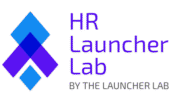
Ensuring a safe and compliant workplace is not only a legal requirement but also a crucial step in protecting employees and fostering a productive environment. OSHA (Occupational Safety and Health Administration) standards provide the framework for workplace safety, but understanding whether your business meets the compliance thresholds and knowing your specific obligations can feel overwhelming.
This article helps clarify these requirements, offering actionable steps to meet OSHA standards and maintain compliance, while preserving industry-specific guidelines for construction, manufacturing, healthcare, and office environments.
Disclaimer #
The information on this site is meant for general informational purposes only and should not be considered legal advice. Employment laws and requirements differ by location and industry, so it’s essential to consult a licensed attorney to ensure your business complies with relevant regulations. No visitor should take or avoid action based solely on the content provided here. Always seek legal advice specific to your situation. While we strive to keep our information up to date, we make no guarantees about its accuracy or completeness.
This content may contain affiliate links, meaning we receive a commission if you decide to make a purchase through our links, at no cost to you.
For more details, refer to our Terms and Conditions.
